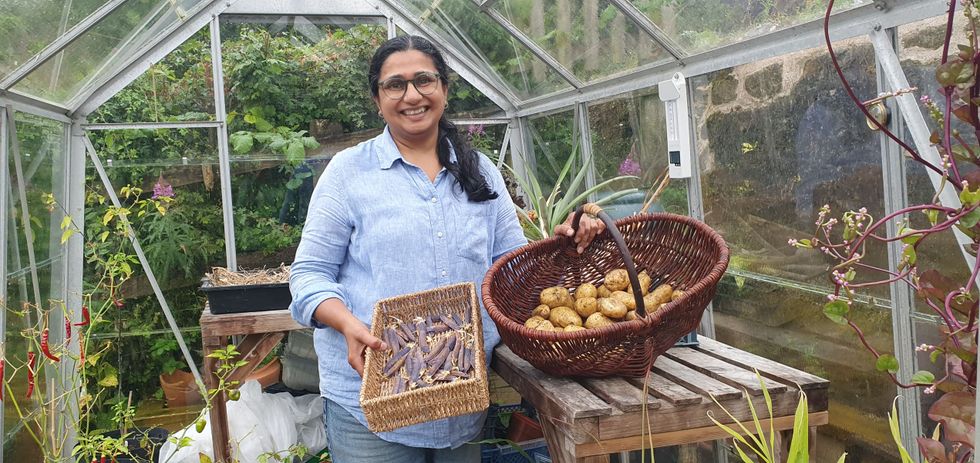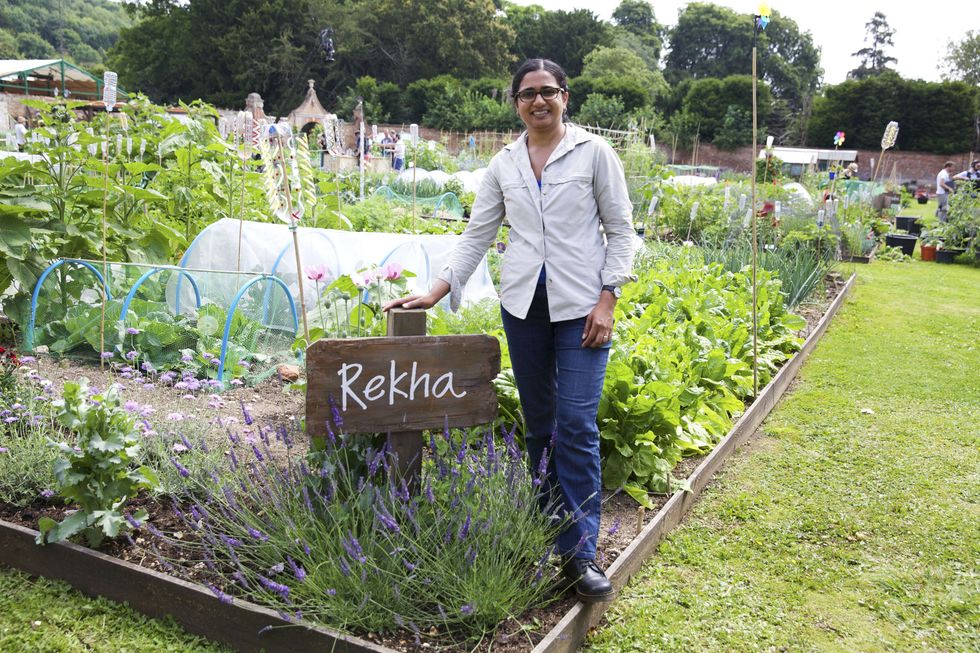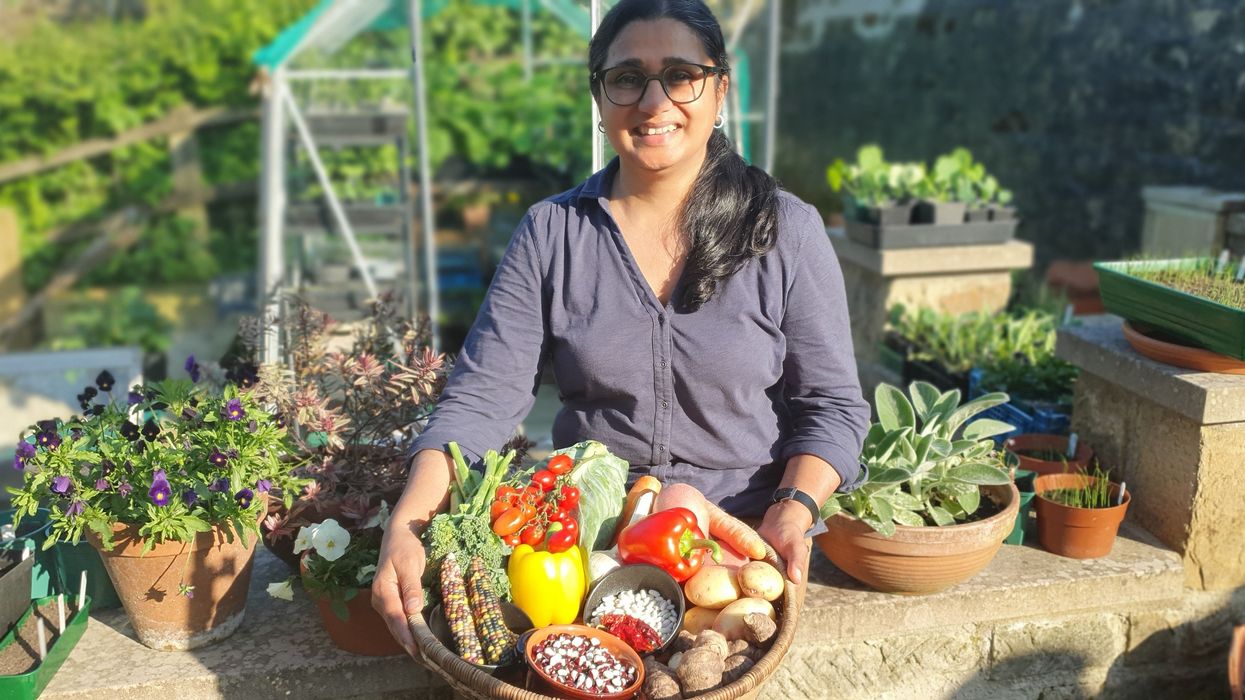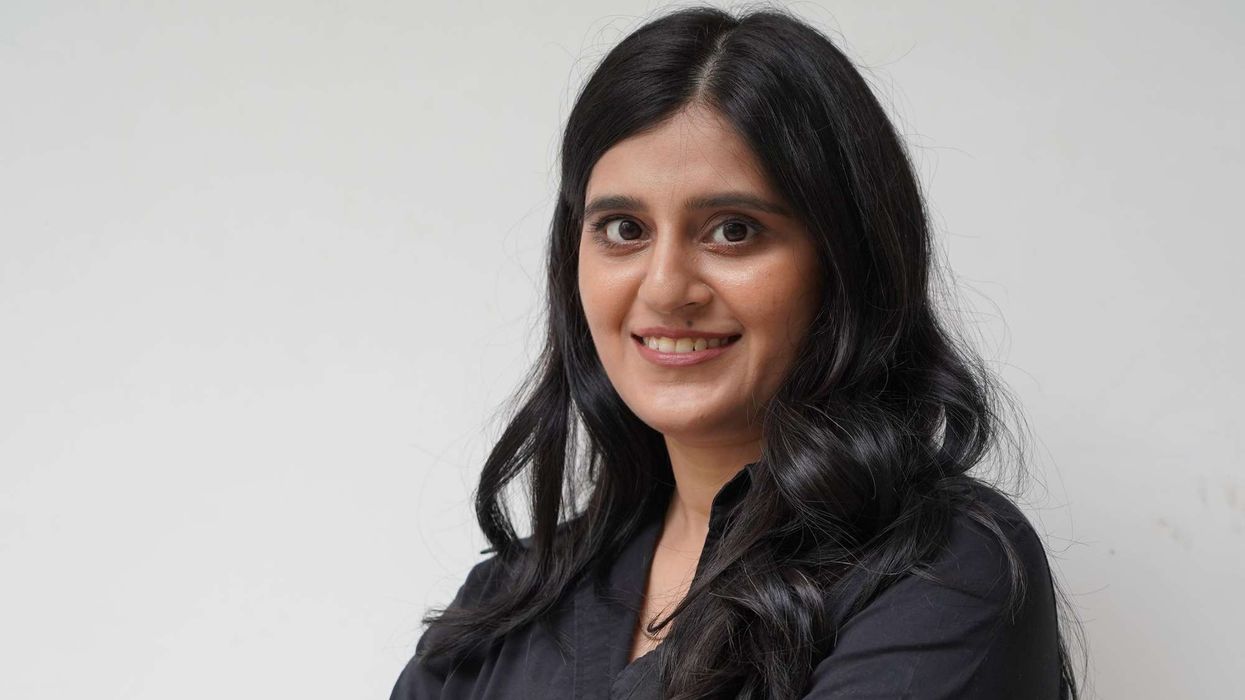REKHA MISTRY, who grew up with her Indian parents in Zambia and came to Britain when she was 19, appeared as a co-presenter on BBC Two’s Gardeners’ World last Friday (8), thereby confirming her growing status as the UK’s most prominent celebrity Asian gardener.
She was introduced by lead presenter Monty Don, who said: “We’re going up to Derbyshire now to join Rekha in her veg garden.”
Married with three children, she moved with her family from Harrow in London to the Peak District in Derbyshire in 2023.
Last week, she began her stint by saying: “I have always found such joy in growing my own fruits and vegetables, and this year, I’ll take you through how I sow it, grow it, and most rewarding of all, how I cook with it. I love coming up into the garden at this time of the year. There is so much going on.”
She went on: “I’ve got the beans, I’ve got the squash, I’ve got kale. But what’s really making me happy is this plant, the blackcurrant. It is full of fruit this year; blackcurrants are such a good fruit. You can make jam with them. You can make cordials. You can put them in desserts. But the best thing is you can freeze them as well. When it comes to blackcurrant, you can pick them one by one, but I find it much easier to prune whole stems once the fruit is ripe. It saves time, and it’s good for the plant, too, encouraging new stem growth, giving next year’s harvest a head start. After a bit of pruning, it’s time for a bit of sowing.”
What’s remarkable about Rekha is that she a self-taught gardener whose life was changed by working on an allotment after 25 years as a company director in a bathroom showroom business. She went back to study with the Royal Horticultural Society and gained a diploma in horticulture. In 2015, she appeared on the BBC’s Big Allotment Challenge. Her debut book, Rekha’s Kitchen Garden: Seasonal Produce and Gardening Wisdom from One Woman’s Allotment Year, has proved to be a best seller. She has a following of 100k plus on Instagram.

The RHS has been trying to widen its appeal, most recently with the help of Eastern Eye, but in a quiet way, Rekha has become a role model for the British Asian community, in particular.
Last week, she talked on Gardeners’ World about growing a variety of fennel called Sweet Florence – fennel is a popular ingredient in many Indian recipes.
She said: “It has that aniseed flavour, if you like that and use it in salads. You can cook with it, and it looks good, too.”
Using a tool called a dibber, a pointed wooden stick that makes holes in the ground for planting seeds, seedlings or small bulbs, she showed how leek seeds could be sowed: “I’m just dibbing holes about two centimetres deep, and that will just help them anchor in. I’m going to sow three seeds a hole, it’s called station sowing.”
The best of the three seedlings that come up, she would keep, “the other two come out”.
“Now, once I’ve sown the seeds,” she told viewers, “I will give it a good watering, so that for the next few weeks, I will make sure that this pot doesn’t dry out and let them grow in a nice sunny spot with a bit of shade towards the end of the day. Fennel plants don’t like big swings in temperature.”
She offered practical advice as she turned her attention to potatoes and leeks: “I’m keeping a close eye on the potatoes and around now I like to pinch off the flowers, so the plant put all its energy into the spuds, not into the seeds. It’ll be a while before the main crop is ready, but the early ones, they’re just right for lifting. Just harvest what you see to begin with, but then fork in again, because you never know, there just might be one or two hidden in there, and you don’t want to lose those. Be gentle. The soil that the early potatoes have left behind is full of goodness.”
This was where she planted her leek seedlings: “Space is at a premium at this time of the year. It’s all about keeping the garden ticking along. All I did was clear this soil, make sure there were no potatoes left, dug it over a little bit, raked it over, and then watered it, just so that it’s nice and soft. So when I do make the dibbing holes, the holes remain rather than the soil going down. What I’ve done is I’ve made sure my holes are 15 centimetres in depth, at the same time, 15 centimetres in length.”
She explained: “This variety of leeks is called Musselburgh. It does very well whatever part of the country you’re in. So what I tend to do is just tease them apart and always go for the thickest stem, tease them through, pop them in some water, wash the compost off. See how long the roots are, cut them off. Now, the only reason why I’m cutting these roots off to just a few centimetres is when I am putting them into the dibbed hole, I don’t want the roots to then come upwards. I want them to go downwards, and that way I know the plant will settle itself in. What I’ll do next is water the holes, not throw the soil in. By doing that, the soil is gently covering the leek. It’ll slowly fill up the hole, but it’ll also start growing at the same time without getting any grit between the leaves.
“Now continue watering every few weeks, just so that they can establish themselves. And I know that I will have a crop from September until January. The idea of growing your own is the freshness. There is nothing fresher than something being pulled out of the earth there and then and straight into the kitchen.”

She then focused on “what’s ready. Now, I’m harvesting some of my summer cabbage, and this one’s coming along beautifully, and so are my onions. These are my main crop variety called Paris Silverskin, and if left to grow to full size, they’ll be great for pickling and storing over winter. But I’m going to pick them now as spring onions – perfect for salads, stir fries and garnishing dishes. They’re delicious and mild compared to cooking other varieties. I’ll leave the rest to grow bigger for later on – (I have) one sowing, two harvests.
“It keeps the kitchen stocked and the garden working. I’m taking my freshly harvested vegetables and making a sambar (the south Indian dish) of warm cabbage, with mustard seeds and fresh chilli sprinkled with ground coriander and cumin; a potato salad with spring onion and a bit of sharpness from my homemade pickled beetroot; and for dessert, blackcurrant sponge. At this time of the year, there is so much going on if you plan your garden right. There are so many options that you can choose from. This really is plot to plate. So satisfying, so delicious.”
She finished off by tucking into her ohso-English blackcurrant sponge. Nigel Farage, Suella Braverman, Robert Jenrick and even Donald Trump would love it that the word “diversity” had not escaped Rekha’s lips.













